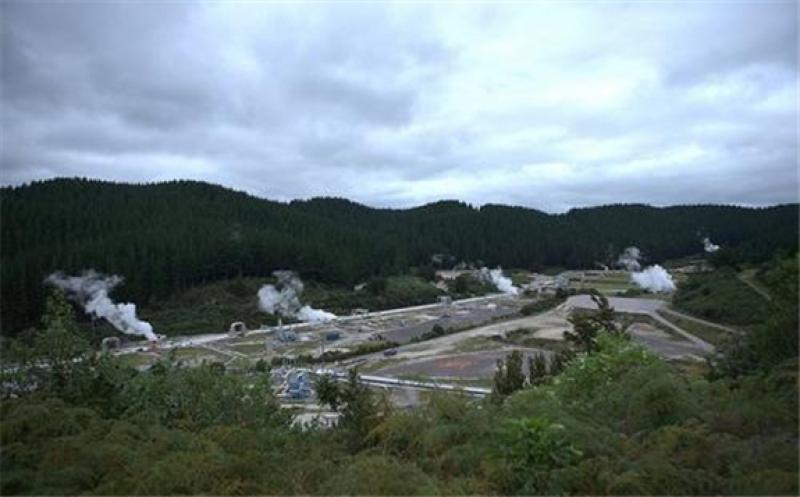Jacobs has outlined its role in providing owners engineering services for Stage 1 of PT Supreme Energy Muara Laboh’s geothermal power plant, as well as its continued support on the Stage 2 development plant.

Already the world’s second largest geothermal producer and with an abundance of natural resources, Indonesia is well placed for the transition to renewable energy. However, its energy sector still relies primarily on coal, oil and gas to power its electricity grid. As it stands, only 7% of energy is generated from renewable sources.
In 2017, the Indonesian government set a target of 23% renewable energy by 2025. Geothermal power will play a key role in helping the government reach its target and current generation capacity set to quadruple, growing from 1800 MW to 7200 MW. One of the projects helping the government reach this target is the Muara Laboh Geothermal Power Plant in South Solok, West Sumatra.
Jacobs’ work on the project began in 2014. The company’s team was engaged by PT Supreme Energy Muara Laboh (SEML)—a joint venture between PT Supreme Energy, ENGIE and Sumitomo Corporation—to provide Owner’s Engineering (OE) services for Stage 1 of the project. Services included developing process and layout concepts, plant capacity modelling, project cost estimate, concept process engineering, technical specifications, technical bid documentation, bid evaluation, design review, construction and commissioning support for an 85 MWe geothermal plant.
Stage 1 was completed in December 2019. It is the first project in the West Sumatra region to generate electricity from geothermal steam resources using a dual flash turbine and geothermal steam gathering system.
Tackling challenging site conditions
Project delivery challenges matched the complexity and magnitude of the project itself. The plant is located around 150 km south-east of Padang, spread over approximately 154 acres (62.3 hectares) of land and borders the Kerinci National Park. While the site had many positive attributes, including its proximity to production wells and feasibility of gravity injection and separation from geothermal brine, it also presented significant challenges. These included high seismic risk, steep terrain, limited space, potential for land slips, variable ground conditions and potential exposure to heavy rain.
Jacobs specified extensive risk management and robust design requirements during the early stages of the project. This meant bringing together a team with a deep understanding of the processes, risks and uncertainties presented and the credibility and foresight to serve as a trusted advisor and support key stakeholders to deliver a successful outcome.
Designing with the future in mind
Jacobs’ understanding of SEML’s future plans for the Stage 2 development (an additional 65 MW capacity) shaped the company’s design approach and it avoided design decisions and compromises that might impact the subsequent development. Extra attention and careful planning went into the detailed design for the steamfield to protect key physical and process interfaces, and minimise the potential impact on operations during Stage 2 development.
The team also had a significant input into developing robust solutions for pads, drainage, engineered fill and cut slopes to provide a resilient overall solution that would protect it for a minimum 50-year design life in what is a geologically unstable area prone to high levels of seismic activity and high intensity rainfall.
Leveraging world-class global expertise
The project presented many challenges. For example, when construction started the geothermal resource capacity was still uncertain. So, when drilling and testing during construction found the site had less capacity than originally thought, the design had to be quickly adapted to match the new resource capability. Challenging and highly variable soil conditions were a constant battle on-site during construction.
Jacobs’ geothermal knowledge and experience collected from other geothermal projects across the world was key to managing risks and providing the right solutions. Specialist technical staff completed in excess of 430 days on-site in order to support the client and assume key responsibilities in supervising the construction and commissioning works. Engineering teams in Indonesia and New Zealand were supported by specialists based in seven countries around the globe. This combination was key to positively influencing the design and resolving site and construction issues as they arose, while ensuring a resilient and flexible design for future development.
Delivering social benefits to the community
The project has delivered significant benefits to the local community, including creating employment opportunities for an estimated 1,200 people over the 30-month construction period. Gone are the days when the people of South Solok experienced power outage up to three times a day. Now powering up to 340 000 households in the province, the geothermal plant delivers an estimated 1 730 000 MWh per year to the Sumatra grid through a 150 KV High Voltage Transmission Line (SUTT).
Jacobs continues to support SEML on the Stage 2 development plant which will provide additional long-term security of steam supply to the geothermal development. The new development will expand Muara Laboh Geothermal Plant’s capacity by an additional 65 MWe and is expected to begin construction in 2021.
This article is reproduced at www.energyglobal.com